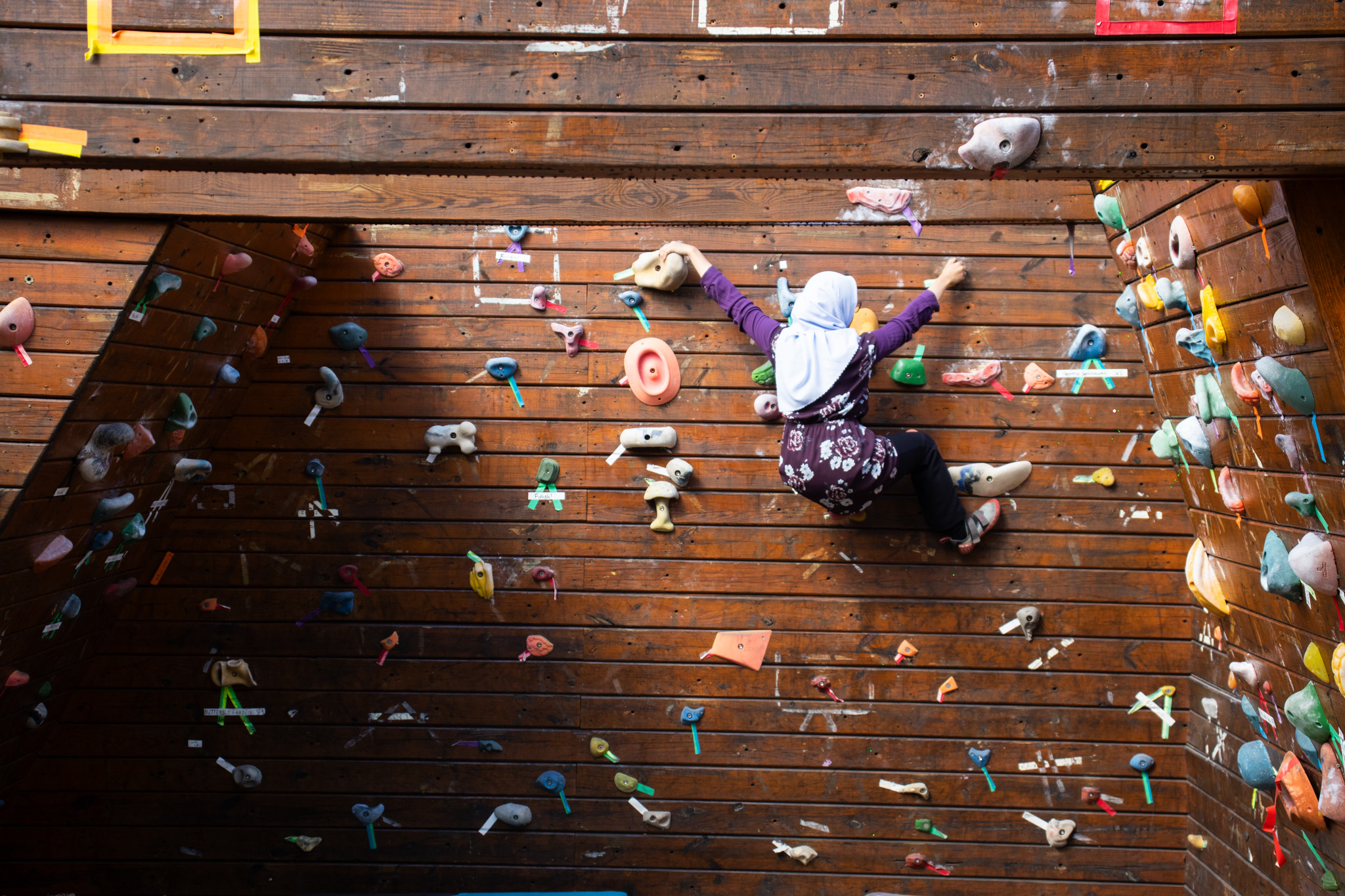CLARIFICATION: This story has been updated to refer to Livi Carey by her preferred nickname.
When senior government and politics major Livi Carey heard that the University of Maryland Facilities Council approved her proposal for a 12-foot indoor rock climbing wall in Eppley Recreation Center, she jumped out of bed and rushed to tell the news to her fellow Maryland Club Climbing members.
The Facilities Council approved Carey’s proposal in April — paving the way for rock climbing to be available to students on campus year-round in the near future.
Last November, Carey, the social chair of Maryland Club Climbing, noticed that this university’s outdoor climbing wall and bouldering grotto are not open year-round due to safety concerns. This prompted her to propose an indoor climbing wall to allow climbing enthusiasts to enjoy the activity on campus year-round.
“I could not believe it,” Carey said. “[The proposal] started off as almost a joke, just kind of a dream, because it didn’t seem remotely possible.”
[Alumni innovations assist UMD sustainability efforts]
This university’s current outdoor climbing wall is only open for two months in each semester because of weather concerns. This year, the outdoor facility closes on Nov. 1 and reopens on March 27.
Any form of moisture in the air presents a slipping hazard to climbers, according to Facilities associate director Andrea Bussler. As a result, students who want to continue climbing in the off-season have to leave campus and buy gym memberships, which can be costly. Some Maryland Club Climbing members visit Movement, a rock climbing gym, with a $79 monthly fee, Carey said.
This reality has made it difficult for club members to climb together year-round, said to Anna Smull, a junior public health science major and the club’s gear manager.
“We can’t get together in the winter unless we all were to carpool to a Movement location,” Smull said. “It just takes away from people’s improvement.”
[Purple Line, new basketball center among current campus construction projects]
Smull added that the indoor wall will transform the club into a more “year-round” group that can more easily adapt to weather changes.
The proposed wall on campus will help students cut down on their fees and make it easier to socialize, Carey added.
Currently, there is no timeline for the start of the indoor wall’s construction. The proposal estimated the climbing wall would cost more than $246,000, Bussler said. The new facility is expected to replace two racquetball courts in Eppley, she added.
Although Carey doubts the wall will be constructed before she graduates, she is excited to see how the project will affect the climbing club moving forward.
“Hopefully we will be able to practice more consistently,” Carey said. “And hopefully, I’ll be able to see it come to life.”



